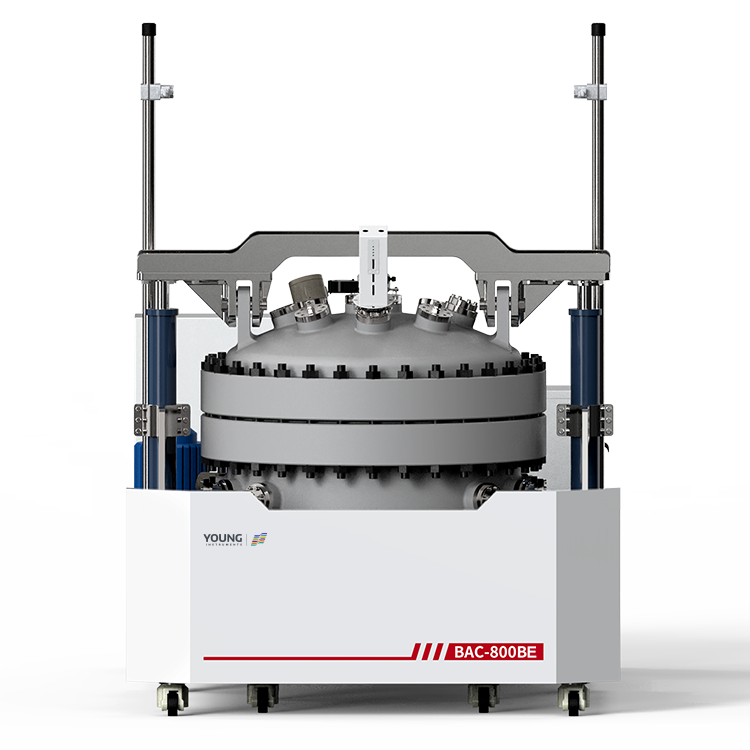A Deep Dive into Battery Calorimeter Analysis with the BAC-420AE
As progress within the lithium battery sector continues unabated, both domestically and internationally, there has been a notable and substantial increase in the necessity for more sophisticated, efficient, and secure battery testing apparatus. With the rise of electric vehicles and the ongoing drive to minimize the overall expenses associated with battery systems, manufacturers are now shifting toward the production of battery cells that are not only larger in physical size but also possess higher capacities and significantly greater energy densities.
These technological strides have presented formidable challenges for conventional battery calorimeter, especially regarding their limitations in chamber volume, inadequate pressure resistance, and their constrained capacity to effectively assess the simultaneous processes of heat generation and gas emission during thermal runaway events. In direct response to the aforementioned escalating requirements, the Large Battery Adiabatic Calorimeter (BAC-420AE) was introduced. This article delves into the distinctive characteristics, wide-ranging applications, and considerable advantages of this state-of-the-art calorimeter, specifically tailored to fulfill the testing demands of forthcoming battery technologies.
The Rise of Large Battery Adiabatic Calorimeters
Challenges with Traditional Battery Calorimeters
Traditional battery calorimeters, such as the Accelerating Rate Calorimeter, were suitable for smaller battery cells but have become inadequate for testing the larger and more complex battery systems emerging in the market today. These devices often suffer from limited chamber volume, insufficient pressure resistance, and the inability to simultaneously analyze heat and gas production during thermal runaway processes. As a result, the testing of large blade batteries, high-capacity nickel-rich ternary batteries, and all-solid-state lithium metal batteries pose significant challenges for traditional Accelerating Rate Calorimeter systems.
To overcome these limitations, advanced calorimeters like the BAC-420AE have been developed to handle the specific needs of these new battery types. The introduction of large battery calorimeters is a response to the growing trend toward larger, higher-capacity, and more energy-dense batteries that require precise and comprehensive testing to ensure safety and performance.
The Role of Adiabatic Calorimeters in Battery Testing
Adiabatic calorimeters play a crucial role in battery testing by simulating the thermal characteristics of a battery under near-ideal conditions where no heat is exchanged with the external environment. This simulation allows for the direct measurement of critical thermal behavior parameters, such as the onset temperature of thermal runaway, the maximum rate of temperature rise, and the total adiabatic temperature rise.
In the context of large battery cells, the Large Battery Adiabatic Calorimeter (BAC-420AE) offers a more precise and reliable means of studying thermal behavior during various conditions, including charging, discharging, and abuse scenarios. This type of calorimeter helps researchers understand the thermal runaway mechanism and analyze the heat diffusion and fire propagation processes that occur in batteries under stress.
Features of the BAC-420AE
The BAC-420AE integrates multiple testing functions, including thermal, electrical, and mechanical abuse testing, with additional features such as visible/infrared imaging, gas collection, and specific heat testing. This comprehensive suite of tools allows for simultaneous data acquisition of battery voltage, current, temperature, and pressure, which are crucial for conducting detailed thermal runaway analysis.
Notably, the integrated charging and discharging module in the BAC-420AE supports mode switching, constant current/constant voltage charging, charge/discharge current adjustments, and real-time battery capacity calculations. These capabilities make it an invaluable tool for battery researchers and manufacturers looking to optimize their designs for both performance and safety.
The Testing Principles of the Large Battery Adiabatic Calorimeter
The Thermal Compensation Mechanism
One of the key testing principles behind the BAC-420AE is its ability to maintain an adiabatic environment by utilizing thermocouples to gather temperature data. The calorimeter employs a temperature-tracking mode to ensure accurate heat compensation, preventing heat exchange between the sample and its surroundings. This process simulates the real-world scenario of a battery’s exothermic reactions when heat cannot escape, allowing for a more realistic study of battery behavior under stress.
The adiabatic environment created by the calorimeter allows for the collection of essential kinetic parameters during thermal runaway, including the self-heating rate and the maximum temperature rise. This data is critical for understanding how and when a battery enters thermal runaway and what factors contribute to the process.
The H-W-S Mode: A Unique Testing Approach
The H-W-S (Heat-Wait-Search) mode is another critical feature of the BAC-420AE, enabling researchers to detect the exothermic reactions of battery samples more accurately. In this mode, the system heats the sample to a specified temperature step, and then enters a waiting period to allow the sample, container, and calorimeter chamber to reach thermal equilibrium. This ensures that any detected self-heating is not influenced by external factors, providing a more accurate measurement of the battery’s thermal characteristics.
If the system detects a self-heating reaction beyond its sensitivity threshold, it switches to adiabatic mode, continuously tracking the sample’s temperature and self-heating rate. This process allows the calorimeter to capture real-time data on the battery’s exothermic reactions, helping researchers determine at what point the battery enters thermal runaway and how the reaction evolves.
Customizable Testing Parameters
The BAC-420AE offers extensive flexibility when setting up experiments. Researchers can define parameters such as the starting temperature, temperature steps, waiting time, and termination temperature, ensuring that the tests are tailored to the specific battery sample being analyzed. Before each test, thermocouples are affixed to the battery sample, with placement depending on the study’s objective. Once the sample is securely placed inside the calorimeter chamber, and the chamber is sealed, the system is ready for testing.

Applications of the Large Battery Adiabatic Calorimeter
Advancing Battery Materials Research
The BAC-420AE is a valuable tool for researchers working on new battery materials. By helping to analyze the decomposition mechanisms of electrode materials, researchers can gain insights into the potential issues that may arise during prolonged battery use. This information is crucial for developing safer and more reliable batteries, particularly as demand for longer-lasting and higher-performance batteries grows.
The ability to test the thermal stability of individual cells also allows for a better understanding of how different electrode materials and electrolytes perform under various conditions. This is particularly important for the development of next-generation batteries, such as all-solid-state lithium metal batteries, where material stability plays a critical role in performance and safety.
Enhancing Battery Safety Through Thermal Stability Testing
Thermal stability is one of the most important factors in ensuring battery safety. The BAC-420AE enables researchers to evaluate the thermal stability of battery cells under various states of charge, helping to ensure that batteries remain safe under a wide range of operating conditions. This is especially important for electric vehicle batteries, which must withstand extreme temperatures and potential abuse during their lifetime.
By simulating thermal runaway mechanisms, the BAC-420AE allows researchers to predict how batteries will behave under abuse scenarios, such as overcharging, overheating, or mechanical damage. This information is invaluable for optimizing battery designs to prevent catastrophic failures and improve overall reliability.
Supporting Automotive Battery Testing and Development
As electric vehicles become more prevalent, the need for robust testing methods for automotive batteries has never been greater. The BAC-420AE helps automotive researchers and manufacturers determine the explosive limits of batteries, optimize onboard battery thermal management systems, and conduct “thermal shock” tests on power batteries. This ensures that batteries used in electric vehicles are not only high-performing but also reliable and safe under real-world driving conditions.
By conducting comprehensive thermal runaway tests, the BAC-420AE enables the development of safer batteries that can withstand extreme abuse and harsh environments. This is a critical aspect of improving the reliability and safety of electric vehicle batteries, ultimately contributing to the widespread adoption of cleaner and more efficient transportation solutions.
Conclusion
The Large Battery Adiabatic Calorimeter (BAC-420AE) is a cutting-edge tool that addresses the challenges posed by the latest generation of large, high-capacity batteries. By providing precise thermal behavior measurements and enabling comprehensive abuse testing, this calorimeter is an essential instrument for battery researchers and manufacturers. Whether improving battery materials, enhancing thermal stability, or supporting the development of safer electric vehicle batteries, the BAC-420AE offers invaluable insights into battery performance and safety.
As the demand for more advanced batteries grows, instruments like the BAC-420AE, supplied by Hangzhou Zeal Instruments Science & Technology Co., Ltd., will play an increasingly important role in shaping the future of energy storage technologies.






































